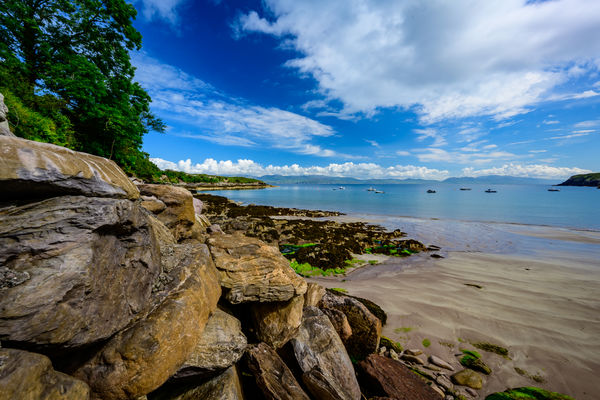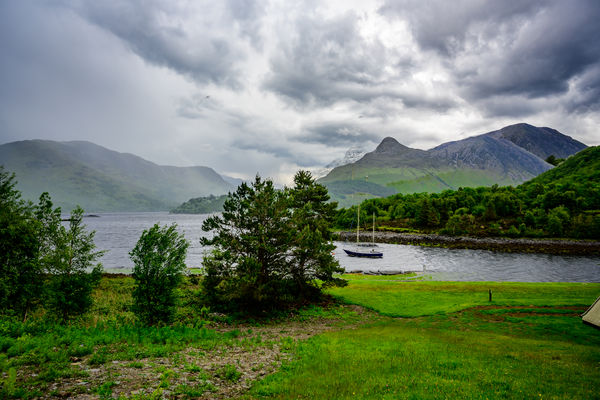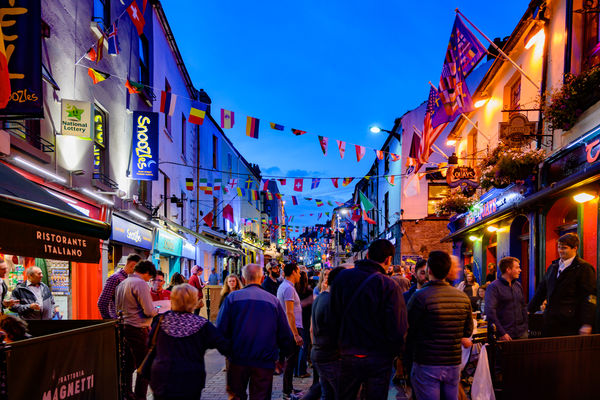Posts for: pappleg
Dec 24, 2019 09:35:29 #
You need at least 16 gigs of ram and 32 is better. When I traded my D810 for the Z7 and it's 45MP my old iMac with 8 gigs of ram froze (40 min to do an HDR). Got a new iMac (27") with 8 gigs from factory but added another 32 from OWC and it screams. Pat
Dec 19, 2019 09:41:45 #
rwilson1942 wrote:
Don't know for a fact, but I suspect it is because video cameras generally shoot 16:9 aspect ratio as compared to 3:4 for DSLRs.
A round lens hood that worked for the 16 side would not be very effective on the 9 side.
A round lens hood that worked for the 16 side would not be very effective on the 9 side.
DSLRs are actually 2X3
Nov 22, 2019 08:11:05 #
Back lighting is not always bad. I would avoid the flash and use a circular polarizer to minimize reflections. Without seeing the scene I would say this is likely a circumstance that could use the ETTR technique(Exposure to the right) meaning the right side of the histogram. Increase exposure until you approach clipping the highlights and then bring the highlights back down in post processing. This will give more substance to the shadows and lower the contrast somewhat- a few examples would confirm if this approach could help. Pat
Nov 13, 2019 08:57:16 #
Hi Paul, always enjoy your imagery! Other than the unique color palette of some films what is the value of using high res scanned film compared to the digital image? I have read that the digital sensors of newer cameras exceed the resolution of any film. Curious. Thx Pat
Sep 26, 2019 09:45:01 #
I too traded the D810 for the Z7 primarily due to weight issues. There are places I simply cannot go lugging the 810 and five Zeiss primes at 24lbs so I now have the 7 with 24-70 F 4.0, 14-30 F4.0 and an older 105 Micro Nikkor that manual focusses on the 7-that's ok with me; including the adapter the package is now just over 5 lbs. Never looking back my ultimate test was a trip to Scotland and Ireland in June. Attached are some examples.
Aug 27, 2019 08:56:18 #
Wonderful images; what time of year were you there?
Aug 21, 2019 14:32:28 #
JohnR wrote:
The only reason I can come up with is that in 1959... (show quote)
Actually the reference has nothing to do with 35mm still cameras. 35mm Film began life as movie film hence the sprockets on either side to drive the film though high speed cameras and projectors. Movie film came in 8mm, 16mm or "Full Frame" 35mm which is what major film studios used exclusively. Imagery was both shot and projected in vertical orientation and turned to horizontal format with anamorphic lenses. As is often the case the name "Full Frame" stuck and became part of the lexicon of still photography. Pat
Jul 28, 2019 18:14:41 #
BluesImprov wrote:
A few days ago I was literally on the verge of buy... (show quote)
Think about this for a minute; Nikon's new Mirrorless cameras, The Z6 & Z7 use only XQD cards-no other options. Do you really think they would tie their future to a planned obsolete card-no way!! My CF cards read/write at 60-150 mb/sec; the XQD card reads/writes at 400-440mb/sec. A 45 megapixel camera needs all the r/w speed it can get. XQD will be with us for a long time-count on it. Pat
Jul 23, 2019 08:52:58 #
Howard5252 wrote:
I just got my Movo Bean; it is like an upside down U; designed to go over a car door.
I'd like to get some suggestions about filling it ... besides the usual rice or beans.
It will be supporting a fairly heavy lens and I'd like the bag to be on the light side
if possible. Does anyone have an idea for filling; something not normally thought of?
I guess what I want is lead shot stability with the weight of rice :-)
I'd like to get some suggestions about filling it ... besides the usual rice or beans.
It will be supporting a fairly heavy lens and I'd like the bag to be on the light side
if possible. Does anyone have an idea for filling; something not normally thought of?
I guess what I want is lead shot stability with the weight of rice :-)
Check Amazon for polystyrene pellets. I bought last year a 5lb bag for about $10. They are light, inert and won't dissolve if they get wet. They were about 1/8" in diameter so they filled my bag and rest smoothly on any surface. Pat
Jul 21, 2019 07:56:12 #
Dirty Dancing was actually filmed at Lake Lure in North Carolina.
Jul 15, 2019 09:23:44 #
Hi Jim, Writers call it Pot Boiling and for Baseball Players it is Grinding-the process of pursuing one's craft day-in, day-out regardless of conditions or your your level of excitement about what happens to be in front of your lens. It usually does not produce one's most extraordinary work but it is always moving toward improvement in technique, seeing and responding to whatever is there. An early mentor of mine Fred Picker used to say "Chance favors the prepared mind". I am a firm believer that one of the most important qualities inherent to photography is patience. One of my favorite photos of all time is in a studio in Sedona Arizona (cannot recall the name) of a typical Arizona landscape of red rock mountains and desert with no structures and sparse vegetation taken at night. It was a dark sky area with no apparent light pollution in the distance. The photographer used a 5 X 7 view camera set up and framed and focussed at dusk and then he waited for the predicted thunderstorms. Some six hours later they finally showed up at 2:00am; seeing activity in the distance beyond the mountains he waited until the storm got closer and into the desert valley before he opened his shutter on bulb and within a few minutes it happened. Two simultaneous lightning strikes almost perfectly vertical and splitting his frame into roughly thirds appeared and fully lit his scene in ultra dramatic fashion. It is a fabulous image and I would love to have it but printed at 5' X 7' I have no place to put it-a bit pricey too at $4,500 but if I had the resources and space I'd own it. Keep boiling that pot, Jim. Pat
Jul 10, 2019 18:13:33 #
like em! Just got back from Scotland and Ireland and though I did many sunny sky pics I think both countries are best suited to the more somber darker tones especially on the cloudy damp days. Pat
Jul 10, 2019 18:07:28 #
You are a true sky aficionado. Your landscapes often seem to me to be at least as much if not more prominent in the clouds and dramatic lighting as the "land"scape. Do you use ND filters a lot? I have not delved there yet using primarily post processing and HDR to achieve similar effects. Thx Pat
Jul 10, 2019 17:52:22 #
GENorkus wrote:
Back in the analog days I used a simple light mete... (show quote)
That would be attempting to use the camera's reflected light meter as an incident meter-they are two very far different animals and I would not recommend it. Incident meters are designed to read light sources and usually contain a diffusing dome. The metering algorithm is completely different. Pat
Jun 1, 2019 10:36:25 #
Mistral wrote:
Hi! I have an amazing opportunity to be a photojournalist while traveling in Zambia over the next couple of weeks. I really want to take meaningful photos. For context, I work mainly with the poor, raising $$ for water. We will be out in the field. I would LOVE any suggestions, input, ideas on how to get that special shot when things are going to be moving fast.
Get a local guide-specifically someone who knows the area and the water issues is the biggest single advantage you can have.
Pat



